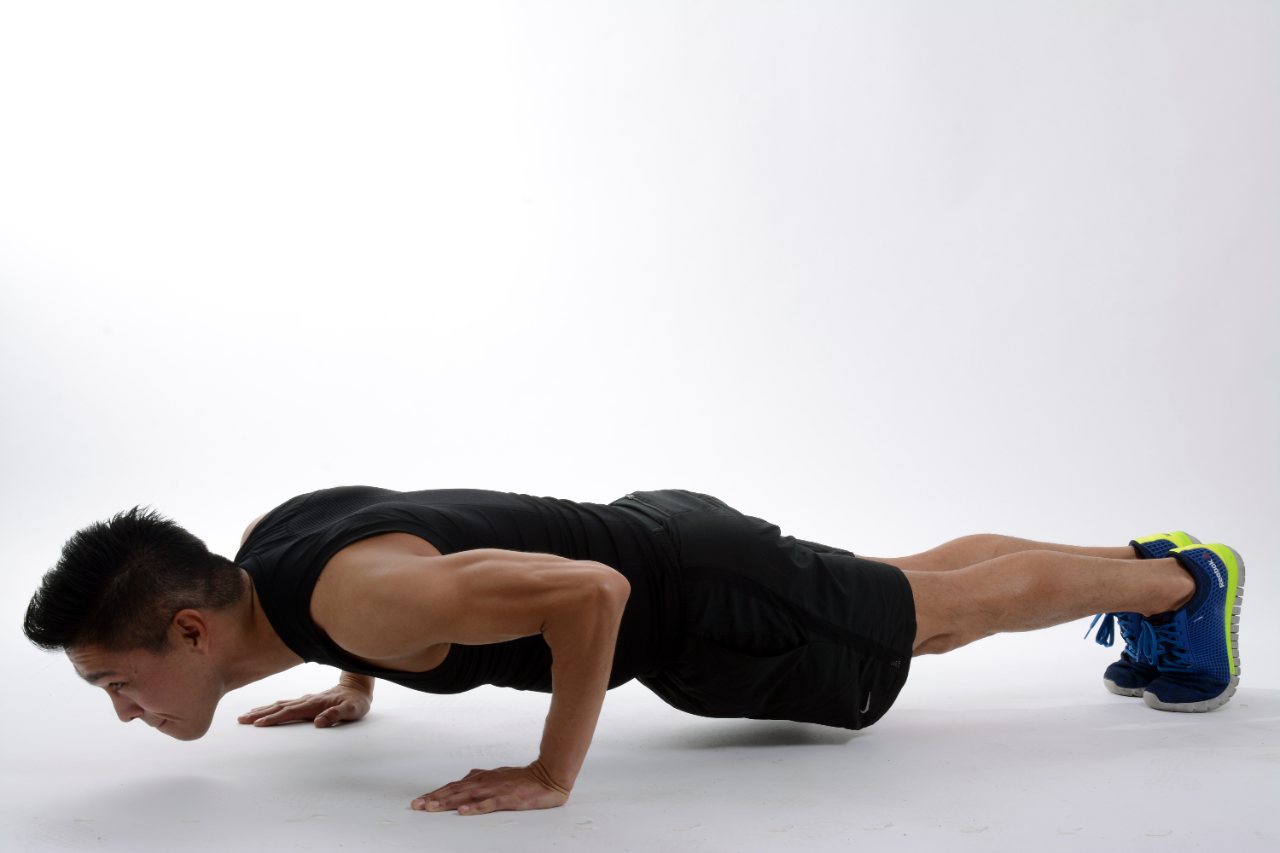
Have you noticed that gym equipment and exercises seem to change every week? Does it make you nervous or intimidated to see people doing so many different exercises? Are they doing them correctly? Regardless of the exercise, or movement, the following three tips should be seared into your mind and utilized to have a safe, positive and effective workout.
1. Keep Your Chest Up and Shoulders Back

Correct posture is imperative in all movements; big and small. Doing so will minimize the possibility of injury since your discs and vertebrae are correctly stacked on top of one another and in line. Keeping your “chest up” and “shoulders back” are common cues a personal trainer uses to teach an individual to have an erect posture throughout the movement. You can also initiate this proper posture by thinking to “stand tall.” Finally, when thinking athletically, proper posture through movement, places your body in the most performance-based position to lock your core in and perform the movement to the best of your ability.
2. Drive With the Heels
While doing leg-based exercises like the squat, deadlift, or lunge, driving through the heels is imperative. Recent studies show that knee stress is 28 percent higher when your knees are past the toe and mid-foot. Pressing through both heels is primarily done to reduce the stress on your knees created by the torque your body produces to lift the mass off the ground. For example, if you were performing any version of weighted squats, from any position (overhead, on the shoulders, in front of the chest, etc.), shift your weight to the ball of your heel and imagine that you were trying to slide a piece of paper under the front of your foot- then lift. This tip remains true for the lunge as well. Place your front foot weight on the heel, but don’t forget tip number 1, as well.
3. Utilize the Full Range of Motion
 When exercising, remember that quality is ALWAYS better than quantity. Guess what? if you can barbell bench press 300 pounds, but there are 12 inches between the bar and the center of your chest… you aren’t benching 300 pounds! Using a full range of motion emphasizes the exertion of all muscle fibers in the movement. It also increases the time the muscle is under tension; making you stronger. Don’t forget that doing an exercise completely will increase overall flexibility. In terms of bench press, lesson the weight and make sure that the bar comes within two inches or less of your chest before returning to the starting position.
When exercising, remember that quality is ALWAYS better than quantity. Guess what? if you can barbell bench press 300 pounds, but there are 12 inches between the bar and the center of your chest… you aren’t benching 300 pounds! Using a full range of motion emphasizes the exertion of all muscle fibers in the movement. It also increases the time the muscle is under tension; making you stronger. Don’t forget that doing an exercise completely will increase overall flexibility. In terms of bench press, lesson the weight and make sure that the bar comes within two inches or less of your chest before returning to the starting position.
Conclusion
Remember, don’t be afraid to help someone who is showing signs of one or more of these common errors. Think about having your chest up and shoulders back when lifting, pushing or pulling things. Keep in mind, it is essential, when doing any leg movements, to press through the heels. Lastly, don’t shorten the exercise or movement – utilize the exercises full range of motion. Using these tips will keep your body in the safest position and reduce the risk of injury. Now that you recognize three key components to safe and effective movement, go out and use them!
Sasquatch Online Fitness Training
References
EPIDEMIOLOGY OF KNEE INJURIES AMONG US HIGH SCHOOL ATHLETES, 2005/06?2010/11. (n.d.). Retrieved from https://www.ncbi.nlm.nih.gov/pmc/articles/PMC3768257/#__abstractidm140472673560688title
Fry, A. C., Smith, J. C., & Schilling, B. K. (2003, November). Effect of knee position on hip and knee torques during the barbell squat. Retrieved October 03, 2017, from https://www.ncbi.nlm.nih.gov/pubmed/14636100
Hruska, R., MPA, PT, & Arthur, M., CSCS. (2013). Postural Restoration: A New Tool for the Coaching Tool Box. Retrieved October 04, 2017, from https://www.nsca.com/videos/conference_lectures/postural_restoration_a_new_tool_for_the_coaching_tool_box/



